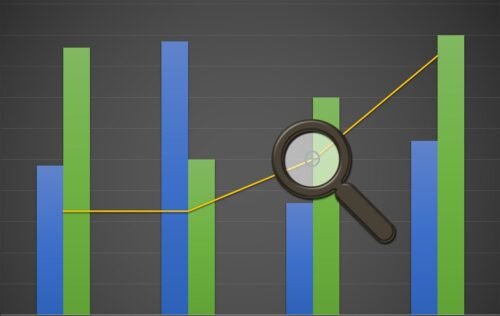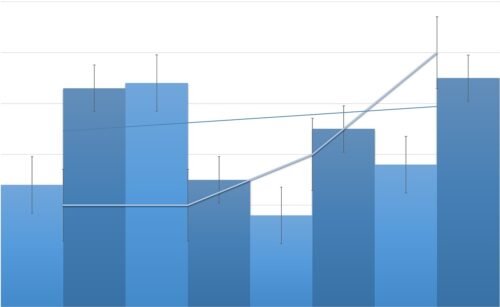In the world of business, accurately predicting sales and revenue is crucial for making informed decisions, allocating resources, and setting realistic goals. However, with so many systems and tools available, it can be overwhelming to determine which one is best suited for sales forecasting. This article explores the various options in the market and examines their features, capabilities, and drawbacks, ultimately helping you identify the system that aligns perfectly with your organization’s needs and objectives.
I. Overview of Sales Forecasting
A. Definition of Sales Forecasting
Sales forecasting is the process of estimating future sales and revenue based on historical data, market trends, and other factors. It involves analyzing past sales data, market conditions, customer behavior, and other relevant information to predict future sales volumes and trends. Sales forecasting helps businesses to plan their production, inventory, and resources, as well as to make informed decisions regarding marketing and sales strategies.
B. Importance of Sales Forecasting
Sales forecasting plays a vital role in the success of any business, regardless of its size or industry. Here are some key reasons why sales forecasting is important:
Financial Planning: Accurate sales forecasts provide businesses with insights into future revenue and cash flow, allowing them to plan their budgets and financial strategies effectively.
Inventory Management: Sales forecasting helps businesses to determine the right inventory levels, avoiding excess or shortage of products. This ensures optimization of resources and minimizes costs.
Resource Allocation: By forecasting sales, businesses can allocate their resources, such as salesforce, marketing budget, and production capacity, efficiently to meet customer demand and maximize profitability.
Market Analysis: Sales forecasting helps businesses to understand market trends, customer preferences, and competitive dynamics. This allows for better decision-making and proactive response to market changes.
Sales Target Setting: Accurate sales forecasts enable businesses to set realistic sales targets and goals for their sales teams. This motivates the salesforce and aligns their efforts towards achieving the desired outcomes.
II. Traditional Manual Methods
A. Spreadsheet-Based Methods
One of the traditional methods used for sales forecasting is spreadsheet-based methods. This involves creating sales forecasting models using spreadsheet tools like Microsoft Excel or Google Sheets. Sales data, market information, and other relevant data are entered into the spreadsheet, and formulas and functions are used to calculate and analyze the forecasts.
While spreadsheet-based methods are flexible and customizable, they can be time-consuming, prone to errors, and require manual updates and maintenance. As the sales organization grows in size and complexity, it becomes increasingly challenging to manage and analyze data effectively using spreadsheets.
B. Pen and Paper Techniques
Before the advent of technology, sales forecasting was often done manually using pen and paper techniques. This involved recording sales data, market observations, and customer feedback in notebooks or journals. Sales managers would analyze the collected data and make forecasts based on their experience and intuition.
Pen and paper techniques, although simple and low-cost, are highly subjective and rely heavily on individual judgment. They lack the accuracy and precision provided by data-driven automated forecasting systems. Moreover, they are not scalable and cannot handle large volumes of data or complex analysis.

III. Automated Sales Forecasting Systems
A. CRM Systems
Customer Relationship Management (CRM) systems are widely used for sales forecasting. CRM systems enable businesses to track and manage customer interactions, sales activities, and customer data. They often include built-in sales forecasting modules or plugins that leverage historical sales and customer data to predict future sales.
CRM-based sales forecasting offers several advantages, such as real-time data updates, centralized data storage, and customizable forecasting models. It facilitates collaboration among sales teams and provides visibility into the sales pipeline and individual performance. However, CRM systems may have limitations in terms of advanced analytics capabilities and integration with other data sources.
B. Advanced Analytics Software
Advanced analytics software, such as business intelligence tools and statistical modeling platforms, are also utilized for sales forecasting. These software tools enable businesses to analyze large volumes of data, identify patterns, and build sophisticated forecasting models.
Advanced analytics software offers powerful data visualization and analytics capabilities, allowing businesses to gain deep insights into customer behavior and market trends. They can handle complex statistical calculations and provide more accurate forecasts compared to manual methods. However, they may require specialized skills and training to effectively use and interpret the results.
C. AI-Powered Forecasting Tools
The emergence of artificial intelligence (AI) has revolutionized sales forecasting. AI-powered forecasting tools leverage machine learning algorithms and predictive analytics to automatically analyze vast amounts of data and generate accurate sales forecasts.
AI-powered forecasting tools can learn from historical sales patterns, market trends, and other relevant data to make precise forecasts. They continuously adapt and improve as more data becomes available, enabling businesses to make data-driven decisions. However, these tools may require integration with existing systems and initial setup and configuration to achieve optimal results.
IV. Features to Consider in a Sales Forecasting System
When choosing a sales forecasting system, it’s important to consider the features and capabilities it offers. Here are some key features to look for:
A. Historical Data Analysis
A good sales forecasting system should be able to analyze historical sales data and identify patterns, trends, and seasonal variations. This allows for accurate forecasting based on past performance.
B. Real-time Data Integration
The ability to integrate real-time data from various sources, such as CRM systems, ERP systems, and external market data, is crucial for accurate and up-to-date sales forecasting. Real-time data integration ensures that the forecasts are based on the latest information available.
C. Customizable Forecasting Models
Each business has unique sales processes and variables that impact sales performance. A customizable sales forecasting system allows businesses to tailor the forecasting models to their specific requirements and workflows.
D. Collaborative Forecasting
Collaborative forecasting enables sales teams to share and contribute their insights and inputs to the forecasting process. This promotes alignment and transparency within the sales organization and improves the accuracy of the forecasts.
E. What-If Analysis
What-If analysis allows businesses to simulate various scenarios and assess the impact on sales forecasts. This helps in evaluating the potential outcomes of different strategies and making informed decisions.

V. Popular Sales Forecasting Systems in the Market
A. Salesforce Sales Cloud
Salesforce Sales Cloud is a leading CRM system that offers robust sales forecasting capabilities. It provides customizable forecasting models, real-time data updates, and collaboration features. Salesforce Sales Cloud integrates with other Salesforce products and third-party applications, making it a comprehensive sales forecasting solution.
B. Oracle Sales Cloud
Oracle Sales Cloud is another popular CRM system that includes sales forecasting features. It offers advanced analytics and data visualization capabilities, allowing businesses to gain insights into sales performance and market trends. Oracle Sales Cloud integrates with other Oracle products and third-party systems, providing a seamless sales forecasting experience.
C. SAP Sales Cloud
SAP Sales Cloud is a powerful CRM system that incorporates sales forecasting functionalities. It provides real-time data integration, customizable forecasting models, and collaborative forecasting features. SAP Sales Cloud integrates with other SAP products and third-party applications, enabling businesses to leverage their existing systems.
D. Zoho CRM
Zoho CRM is a user-friendly CRM system that offers sales forecasting capabilities. It provides customizable forecasting models, real-time data updates, and collaboration tools. Zoho CRM integrates with other Zoho applications and third-party software, allowing businesses to streamline their sales forecasting processes.
E. Microsoft Dynamics 365 Sales
Microsoft Dynamics 365 Sales is a comprehensive CRM system that includes sales forecasting features. It offers advanced analytics, data visualization, and customizable forecasting models. Microsoft Dynamics 365 Sales integrates with other Microsoft products and third-party platforms, making it a versatile sales forecasting solution.
VI. Factors to Consider When Choosing a Sales Forecasting System
When selecting a sales forecasting system, certain factors should be taken into consideration:
A. Size and Complexity of the Sales Organization
The size and complexity of the sales organization should be considered when choosing a sales forecasting system. Different systems have varying scalability and capabilities to handle large volumes of data and complex forecasting requirements.
B. Integration with Existing Systems
Consider whether the sales forecasting system can integrate with existing systems, such as CRM, ERP, or business intelligence platforms. Seamless integration ensures data consistency and reduces duplication of efforts.
C. Cost and Scalability
Evaluate the cost of the sales forecasting system and determine if it aligns with the organization’s budget and scalability requirements. Consider the total cost of ownership, including implementation, training, and maintenance costs.
D. User-Friendliness
User-friendliness is crucial for the adoption and effective utilization of a sales forecasting system. Choose a system that is intuitive and easy to use, reducing the learning curve for sales teams.
E. Customer Support and Training
Consider the level of customer support and training provided by the sales forecasting system vendor. Robust support and training resources ensure that users can utilize the system effectively and overcome any challenges.

VII. Implementation and Adoption Challenges
Implementing and adopting a sales forecasting system may present certain challenges that organizations should be aware of and address proactively:
A. Data Quality and Availability
Data quality and availability are critical for accurate sales forecasting. Inaccurate or incomplete data can lead to unreliable forecasts. Organizations must ensure data integrity and establish data governance processes to maintain data quality.
B. Resistance to Change
Resistance to change is a common challenge during the implementation of a new sales forecasting system. It is essential to have a change management strategy that addresses the concerns of stakeholders and promotes adoption of the system.
C. Lack of Training and Knowledge
Insufficient training can hinder the effective utilization of a sales forecasting system. Comprehensive training programs should be conducted to ensure that users understand the system’s functionalities and can leverage them to their full potential.
D. Alignment with Sales Processes
The sales forecasting system should align with the organization’s sales processes and workflows. It should complement existing sales methodologies and integrate seamlessly into daily sales activities to ensure smooth adoption.
VIII. Best Practices for Successful Sales Forecasting
To maximize the effectiveness and accuracy of sales forecasting, businesses should follow these best practices:
A. Set Realistic Goals
It is important to set realistic and achievable sales goals based on historical data and market conditions. Unrealistic goals can lead to inaccurate forecasts and demotivate the salesforce.
B. Invest in Data Quality and Cleansing
Investing in data quality and cleansing processes ensures that the sales forecasting system is fed with accurate and reliable data. Regularly review and clean the data to maintain its integrity.
C. Regularly Review and Update Forecasts
Sales forecasts should be regularly reviewed and updated based on actual sales performance and market changes. This allows for timely adjustments and course corrections, improving the accuracy of the forecasts.
D. Involve Key Stakeholders in the Forecasting Process
Involving key stakeholders, such as sales managers, marketing teams, and executive leadership, in the forecasting process promotes collaboration and alignment. Their insights and inputs can enhance the accuracy and relevance of the forecasts.
E. Continuously Monitor and Improve Accuracy
Monitor the accuracy of the sales forecasts and track the deviations between the forecasted and actual sales. Analyze the reasons for discrepancies and continuously improve the forecasting models and processes based on the insights gained.
IX. Conclusion
Sales forecasting is a critical process for businesses to anticipate and plan for future sales and revenue. Traditional manual methods are being replaced by automated forecasting systems that leverage advanced analytics and AI technologies. When choosing a sales forecasting system, consider the organization’s size, integration requirements, cost, usability, and support. Implementing a sales forecasting system may face challenges related to data quality, resistance to change, lack of training, and alignment with sales processes. By following best practices, businesses can maximize the accuracy and effectiveness of their sales forecasting process, leading to better decision-making and improved business performance.
